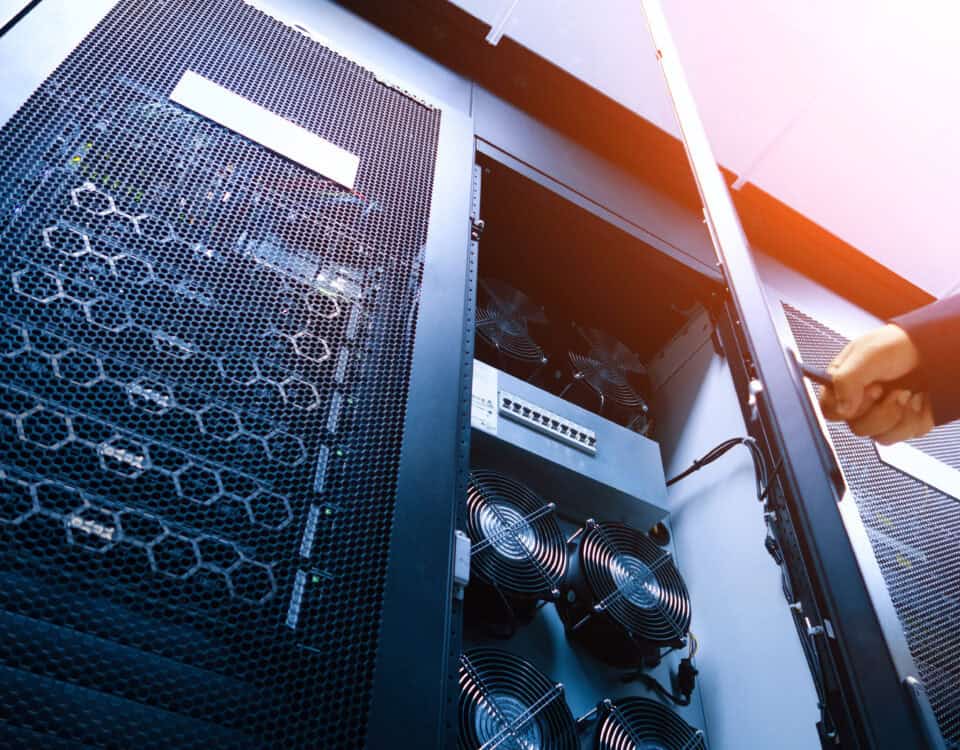
How to Choose the Right Cooling System for Your Data Center?
July 3, 2024
The Mechanics of a Telecom Cooling System
July 18, 2024The global craving for data continually grows and shows no signs of slowing down. Data powers a wide range of activities, from everyday tasks like driving, emailing, listening to music, and even cleaning houses (thanks, iRobot) to more complex applications in medical and scientific fields.
But that leads to a supply and demand problem. While the demand for seamless data processing keeps rising, current systems that supply data processing are nearing their limits. This imbalance compels the development of stronger, more reliable, and more efficient data centers capable of handling the intensifying, almost insatiable, data requirements. This is where hyperscalers come into play.
What is a Hyperscaler?
The term “hyperscaler” is quite self-explanatory. A hyperscale data center (or a hyperscaler, in short) is a large-scale data center, both in terms of size and server capacity. These expansive facilities boast an immense physical footprint and a staggering number of servers, enabling them to effectively handle vast volumes of data and dynamically scale their processing capacity in accordance with fluctuating demands.
These features grant hyperscalers several benefits:
- Flexibility: Their scalable architecture allows hyperscalers to flexibly adapt to changing workload requirements.
- Reliability: With thousands of servers, some dedicated to redundancy, hyperscalers offer enhanced reliability, particularly for big data processing operations.
- Efficiency: Despite their substantial energy consumption, hyperscalers are designed to process data more efficiently by distributing workloads across servers to prevent overheating.
- Reduced Cooling Costs: Thanks to efficient cooling technologies like heat recycling or targeted cooling for high-intensity workloads, hyperscale operators can improve cooling efficiency and reduce associated costs.
- Sustainability: The inherent energy and cooling efficiency allow hyperscalers to operate more sustainably.
How Does a Hyperscale Data Center Differ from a Traditional Data Center?
Although hyperscale and traditional data centers serve some common functions, several key criteria distinguish these facilities and highlight the superior capabilities of hyperscalers compared to their traditional counterparts.
Space
First and foremost, hyperscale data centers are way bigger than traditional data centers. While a data center may take up one room in a building, a hyperscale data center, according to the International Data Corporation (IDC), must house at least 5,000 servers and occupy at least 10,000 square feet of floor space. The truth is that many hyperscale facilities go far beyond these numbers, with some buildings reaching up to 60,000 square feet, roughly equivalent to the size of a U.S. football field.
This could be one reason why most hyperscale data centers are leased, as opposed to traditional data centers that are owned and operated by the company they support.
Data Processing Capacity and Management
Another distinguishing factor of hyperscale data centers is their immense data storage and processing capacity. A typical hyperscale data center features around 250,000 switch ports and thousands of servers in its computing fabric, underscoring its extensive infrastructure and capability to handle vast workloads.
Nevertheless, hyperscalers excel not only in processing sheer amounts of data but, more significantly, in dynamically regulating their operations. In other words, hyperscalers act as sophisticated “load balancers”, scaling their operation up or down and redistributing computing resources to accommodate changing needs. For instance, they might add more powerful servers during peak demand or reallocate resources to optimize performance during periods of lower activity. This agile nature of hyperscale data centers is a key feature that differentiates them from traditional data centers.
Power Consumption
Unsurprisingly, the massive data processing capabilities of hyperscale data centers come with an immense appetite for power. On average, a hyperscale facility consumes a staggering 30 to 60 megawatts of electricity around the clock, with some even surpassing 100 megawatts of continuous power draw.
To put this in perspective, this amount of electricity could theoretically power around 47,000 average US homes (or up to 70,000 homes for facilities consuming 100 megawatts).
Technology
What further distinguishes hyperscale data centers is their advanced technology. Hyperscalers are equipped with smart management software and automation capabilities, positioning them at the forefront of data center innovation. Their huge size and technological demands give hyperscaler operators substantial purchasing power and close relationships with component suppliers, enabling them to customize and optimize solutions that enterprise data center operators cannot achieve. This includes securing cutting-edge hardware and software tailored to their specific needs, ensuring they remain at the peak of technological advancement.
Power Usage Effectiveness (PUE)
Given their size and high energy consumption, one might assume that hyperscale data centers are extremely energy-inefficient. Ironically, despite these characteristics, hyperscalers are actually at the vanguard of efficiency and sustainability in the data center industry. Their scale allows them to incorporate cutting-edge cooling solutions, optimized power distribution systems, and sophisticated energy-saving technologies that smaller data centers might not be able to afford.
Examining the PUE metric reinforces this focus on efficiency. While traditional enterprise data centers typically report an average PUE of 1.67 to 1.8, hyperscale giants like Google achieve remarkably lower PUE figures of around 1.1 — just slightly above perfect efficiency, represented by a PUE of 1.0.
Driving Efficiency and Innovation
As data becomes increasingly central to human activities and technological progress, the distinctive capabilities of hyperscale data centers will likely play an indispensable role in powering our data-driven future.
Looking ahead, the evolution of hyperscale facilities will shape how we collect, store, and process data to enhance our digital experiences. At AIRSYS, the evolution of hyperscale facilities will drive our constant pursuit of cooling innovation, ensuring that our cooling products maintain optimal performance without compromising on balancing the environment.
Sources:
https://www.ibm.com/topics/hyperscale
https://www.aflhyperscale.com/articles/what-makes-hyperscale-hyperscale/




